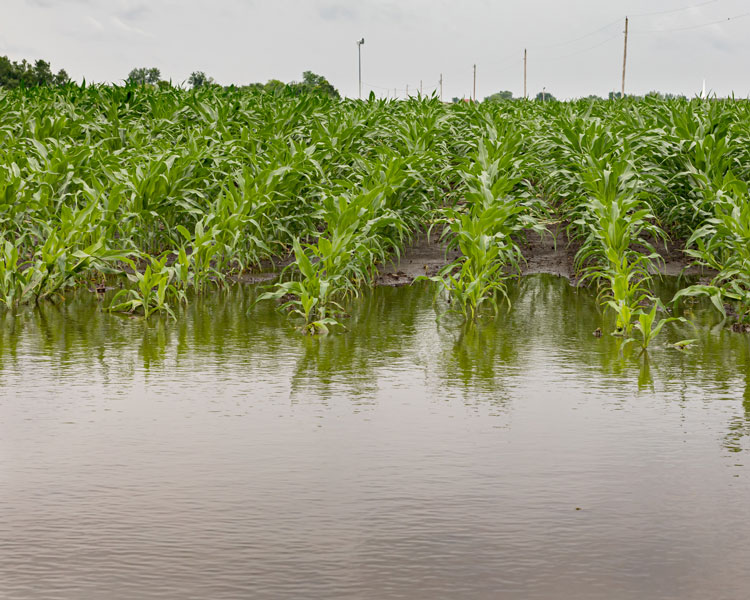
Mother Nature has opened the floodgates and let the rain pour on certain parts of the country. This flooding not only wreaks havoc on buildings and roads, but farmers are often left with damaged crops when the sun returns.
Michigan State University’s Kurt Steinke addressed flooding that had occurred in his state during a “2020 Virtual Breakfast” webcast. The professor and extension specialist spoke specifically about nitrogen (N) losses that may occur after substantial rainfall. These losses can happen through denitrification or leaching.
Denitrification is the conversion of nitrate to N gases; it is the gaseous loss of N from the soil. When soils become waterlogged, oxygen is excluded, and anaerobic conditions occur. Peak denitrification takes place when about 80% of pore space is filled with water, the microbes have a decomposable carbon source (organic matter), and nitrate is present in the root zone. Denitrification is temperature driven and occurs more quickly in warmer soils, Steinke shared, but it can happen at cooler temperatures as well.
On coarse soils, nitrate can be lost through leaching after heavy rainfall. Steinke explained that nitrate is very soluble, highly mobile, and subject to leaching losses. Those losses are influenced by application rate, timing, source of nitrogen, and method of application.
Steinke noted that even though nitrate may move past the rooting zone, it could still be available. This is due to an upward wicking movement of water that takes place as soils dry, and that water carries nitrate with it. In the summer, this movement can be a third of an inch per day. “What is lost can then be found,” he said.
The key to estimating potential N losses is to know both soil and fertilizer characteristics before flooding occurs. Horizontal and vertical variability in the soil affect potential losses, and this can differ from field to field or even between sites in the same field.
Similarly, a farmer must know what fertilizer source was applied, how it was applied, and what was in it. While Steinke said it is unrealistic to know exactly how much N is lost after a flooding event, knowledge of the field and fertilizer that was applied can help formulate a more educated estimate.
Will more nitrogen help?
After flooding, some fields may benefit from a rescue N application, which is different than late-applied N. “Rescue N is when you are trying to save your investment,” Steinke explained.
He recommended applying rescue N as soon as possible after the flood. This addition of N can create yield increases depending on the severity of N losses, but it is only effective if sufficient rain falls shortly after the application. He said there is often a return on investment up until corn has tasseled but rarely beyond that point.
For corn that was underwater for up to three days, rescue N can be quite effective. In fields that were saturated for seven days or longer, Steinke said rescue N may not be worth the cost.
An understanding of corn growth patterns and N update is also helpful. Steinke pointed out that a majority of the N uptake by a plant doesn’t occur right away; prior to the V6 stage, uptake is just 10%.
“You don’t want to throw in the towel too early in the season,” he said, as corn plants don’t start taking N up in earnest until V6 to V10, and especially from V10 to V14. This knowledge can help determine if a field would benefit from additional N at the time of flooding.








